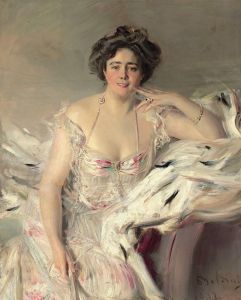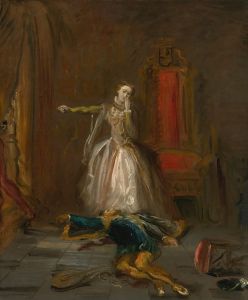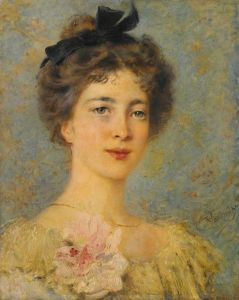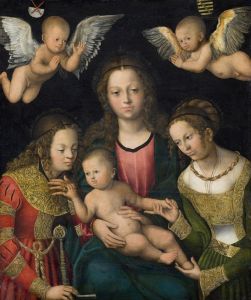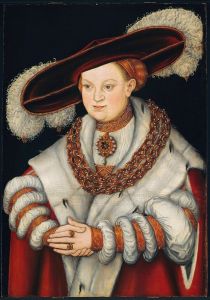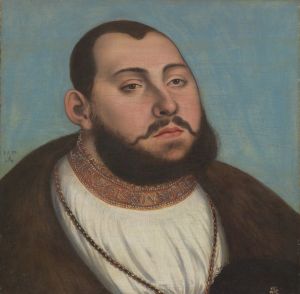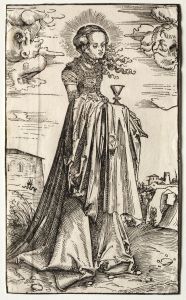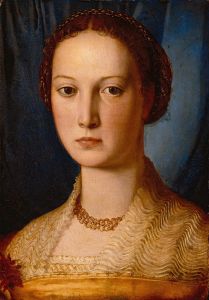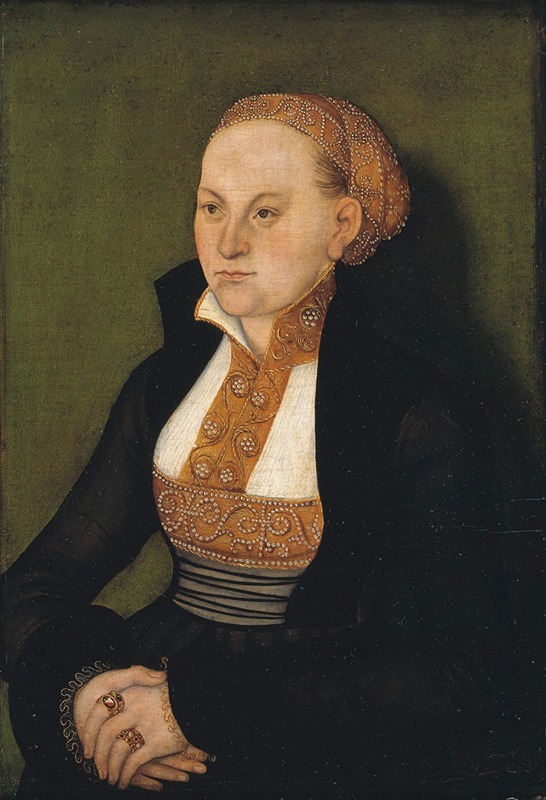
Portrait of a Lady
A hand-painted replica of Lucas Cranach the Elder’s masterpiece Portrait of a Lady, meticulously crafted by professional artists to capture the true essence of the original. Each piece is created with museum-quality canvas and rare mineral pigments, carefully painted by experienced artists with delicate brushstrokes and rich, layered colors to perfectly recreate the texture of the original artwork. Unlike machine-printed reproductions, this hand-painted version brings the painting to life, infused with the artist’s emotions and skill in every stroke. Whether for personal collection or home decoration, it instantly elevates the artistic atmosphere of any space.
Lucas Cranach the Elder, a prominent German Renaissance painter, created "Portrait of a Lady" around 1530. Cranach was known for his portraits, religious subjects, and mythological scenes, often characterized by their meticulous attention to detail and vibrant colors. He served as a court painter to the Electors of Saxony, which provided him with numerous opportunities to paint portraits of nobility and other notable figures of the time.
"Portrait of a Lady" exemplifies Cranach's skill in capturing the likeness and personality of his subjects. The painting features a woman, elegantly dressed, which reflects the fashion and style of the early 16th century. The lady is depicted with a calm and composed expression, a common trait in Cranach's portraits, which often convey a sense of dignity and grace. Her attire, including the headdress and jewelry, indicates her high social status, as such adornments were typically reserved for the upper classes.
Cranach's technique in this portrait is notable for its precision and clarity. He employed a smooth application of oil paint, which allowed for detailed rendering of textures, such as the fabric of the lady's clothing and the softness of her skin. The background is usually kept simple, focusing the viewer's attention on the subject. This approach is consistent with Cranach's other works, where the emphasis is placed on the sitter rather than the surroundings.
The identity of the lady in the portrait is not definitively known, which is not uncommon for portraits from this period. Many of Cranach's portraits were commissioned by wealthy patrons, and the subjects were often members of the nobility or their associates. The lack of specific documentation makes it challenging to ascertain the exact identity of the woman, but her attire and demeanor suggest she was a person of significance.
Cranach's portraits are celebrated for their ability to convey the individuality of the sitter while adhering to the stylistic conventions of the time. His work provides valuable insights into the cultural and social dynamics of the German Renaissance. "Portrait of a Lady" is a testament to Cranach's mastery in portraiture, showcasing his ability to blend realism with an idealized representation of his subjects.
The painting is part of several collections and has been exhibited in various museums, reflecting its enduring appeal and significance in art history. Lucas Cranach the Elder's contributions to the art world, particularly through his portraits, have left a lasting legacy, influencing subsequent generations of artists and continuing to captivate audiences with their beauty and historical importance.





